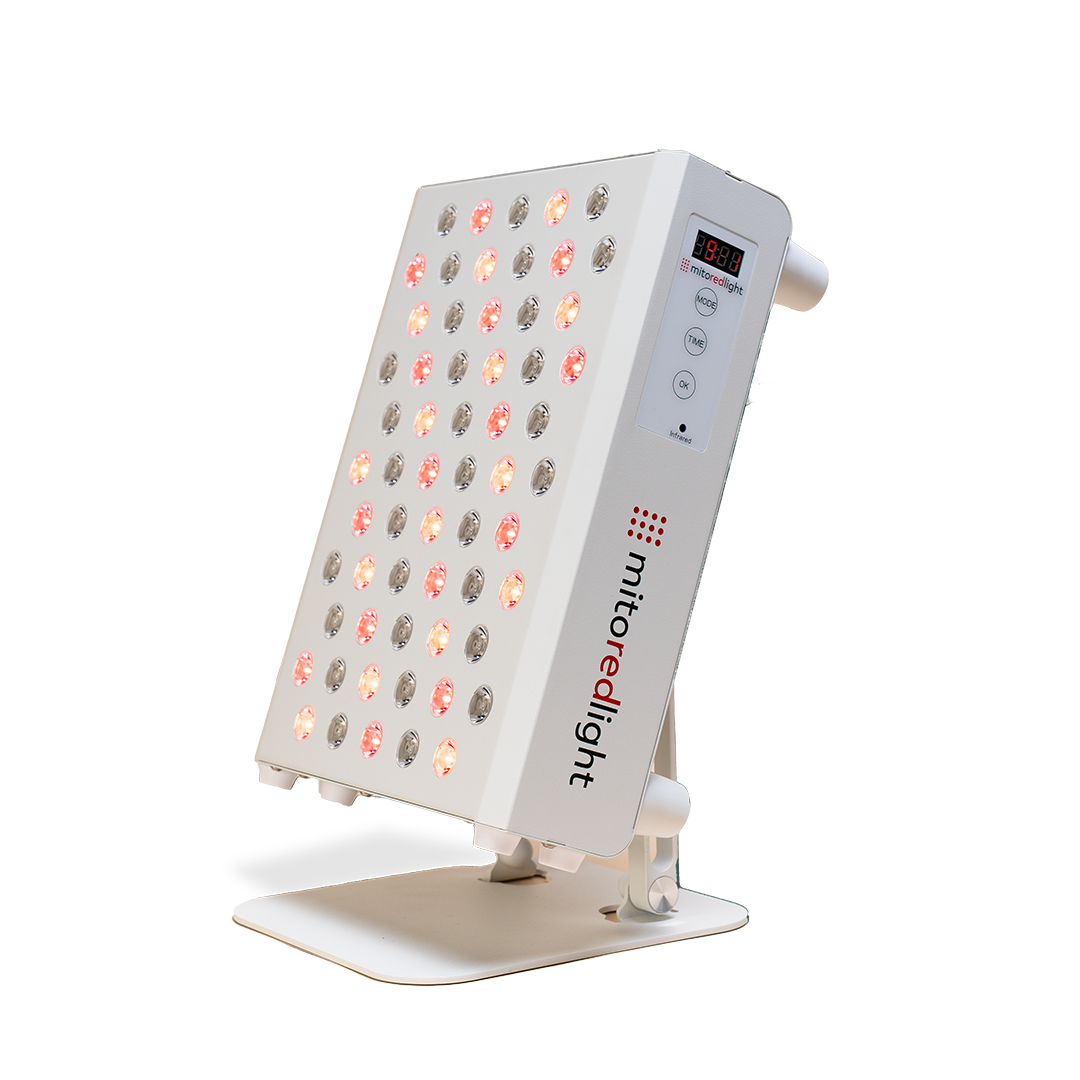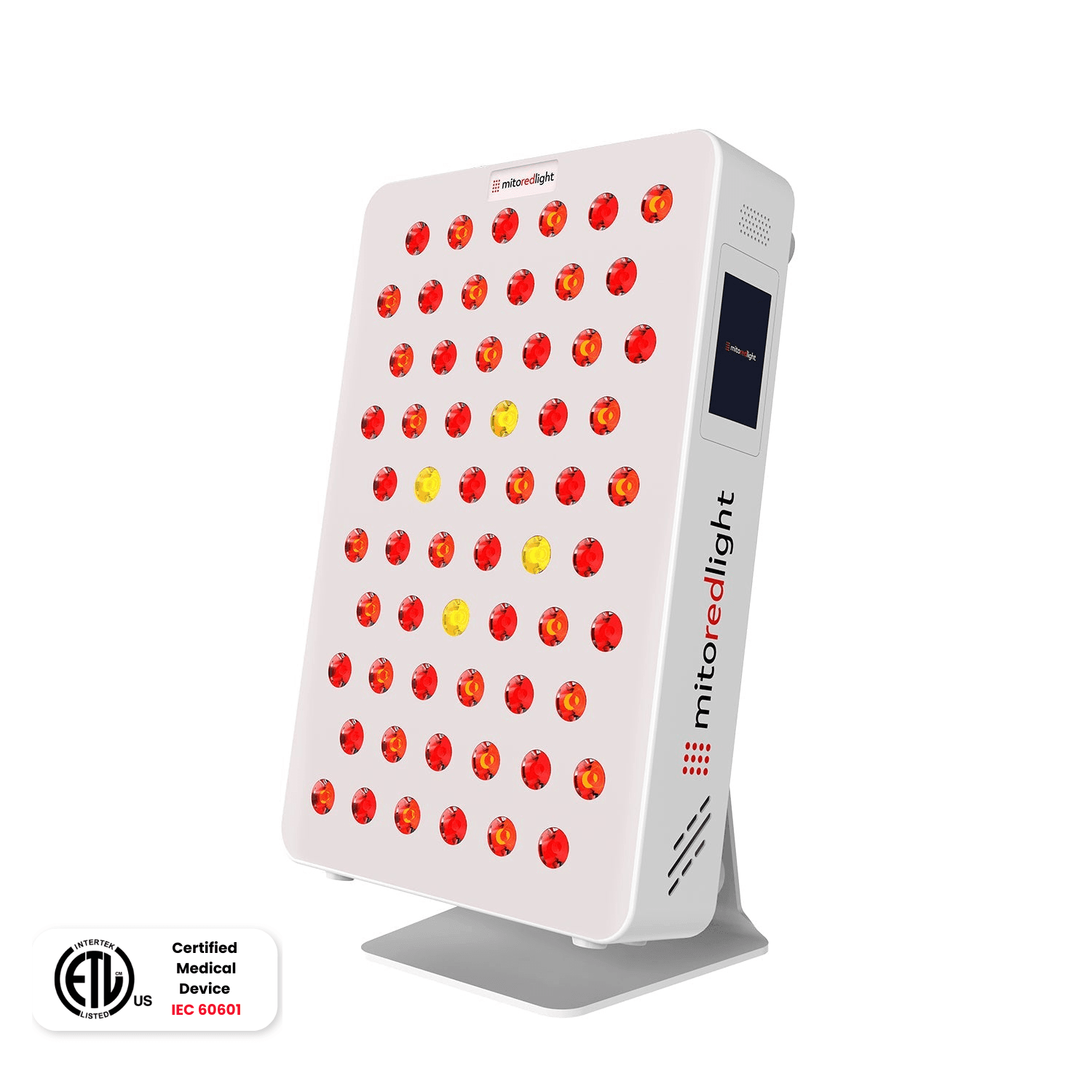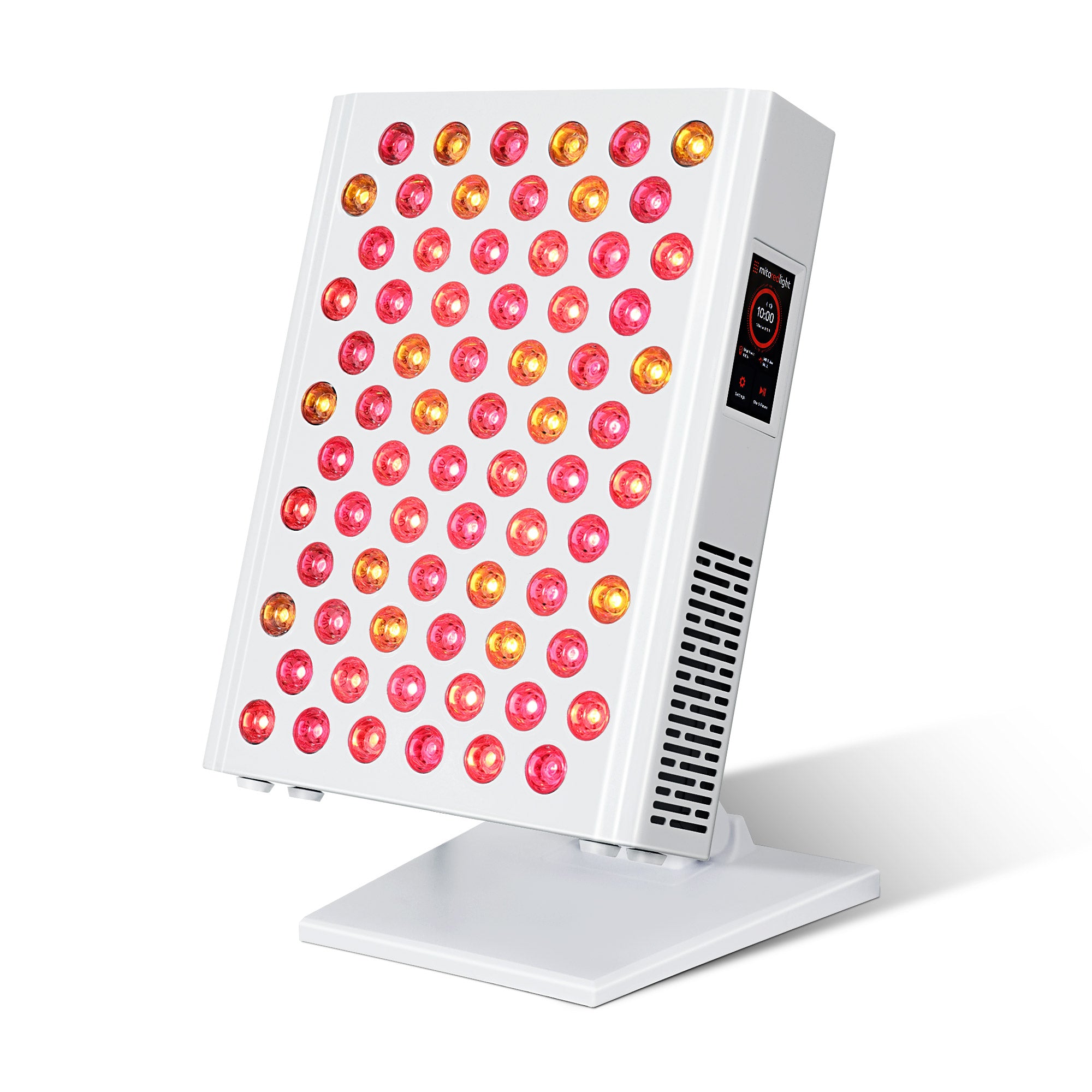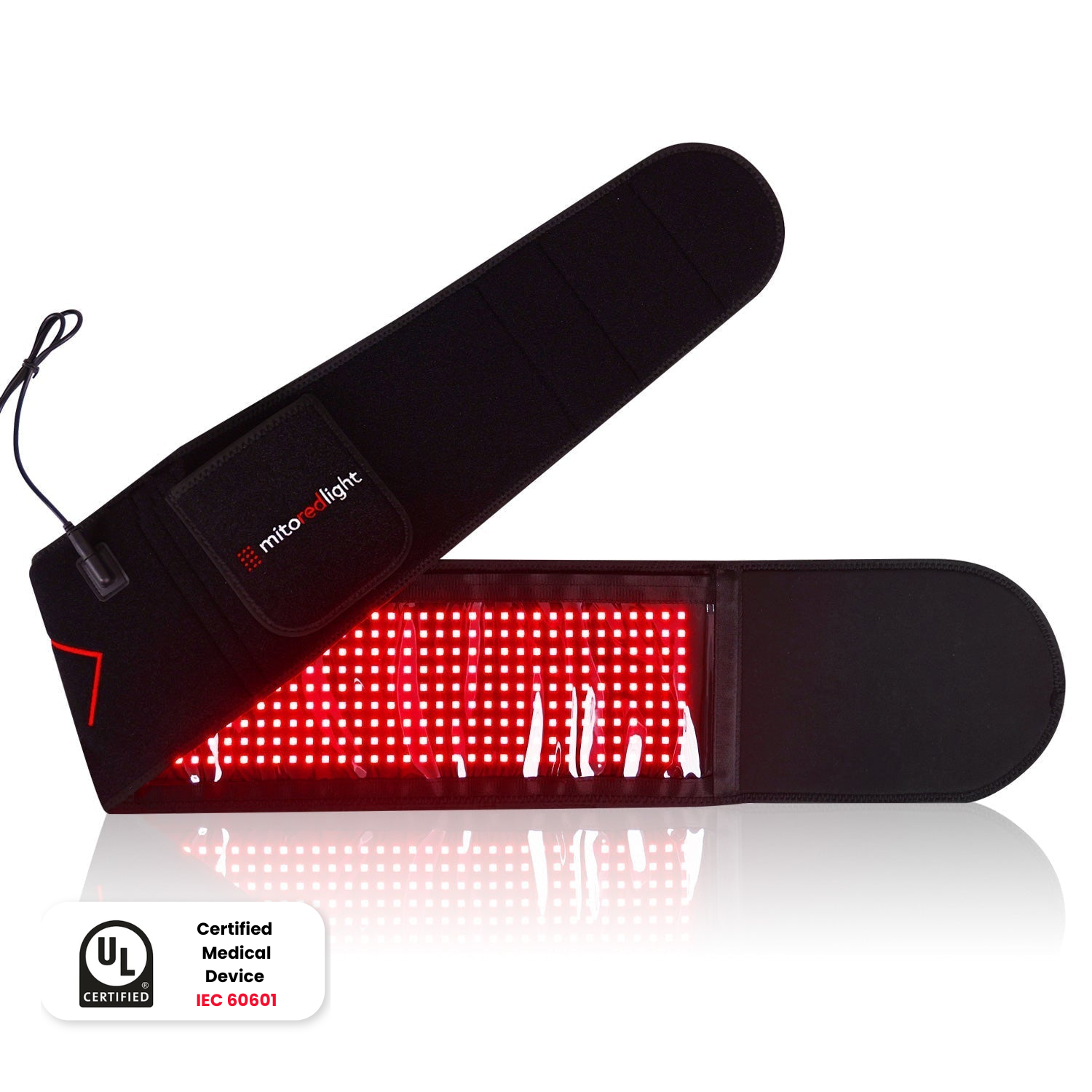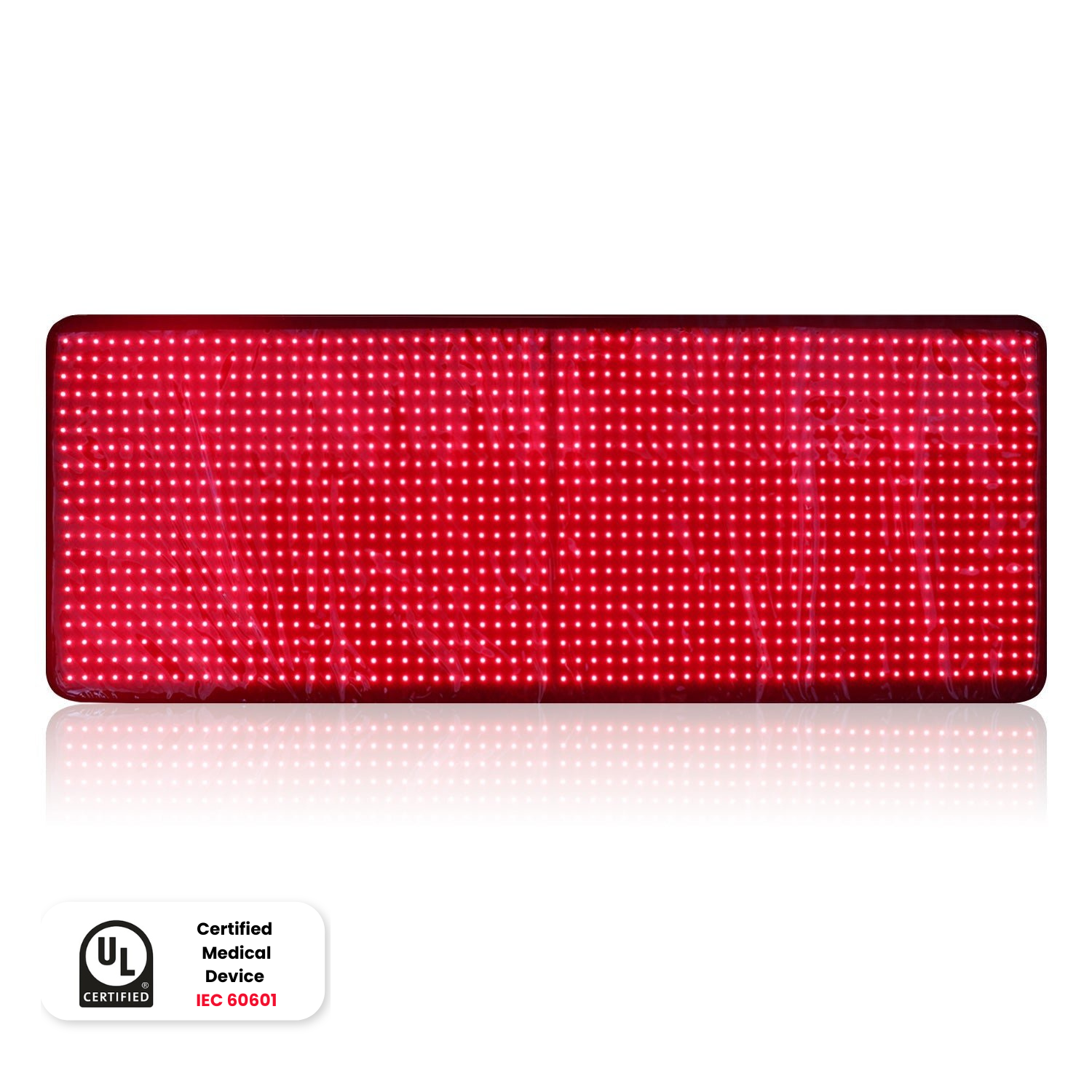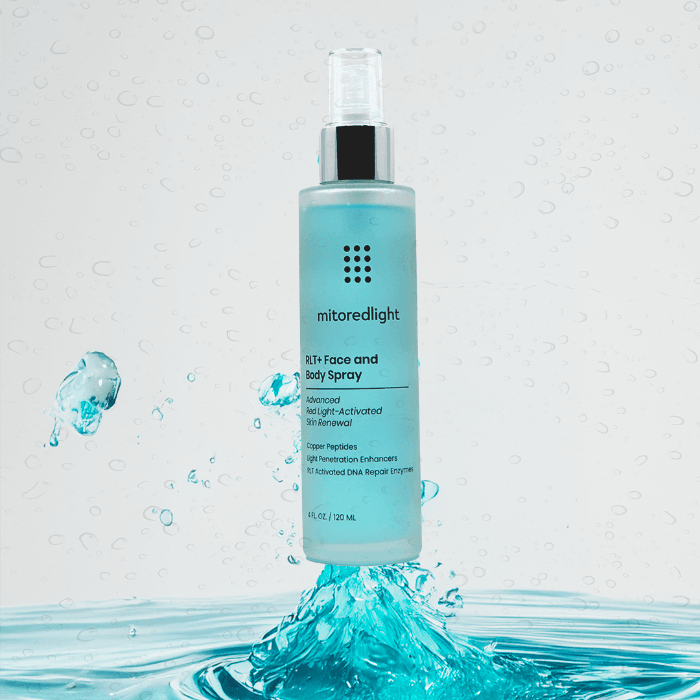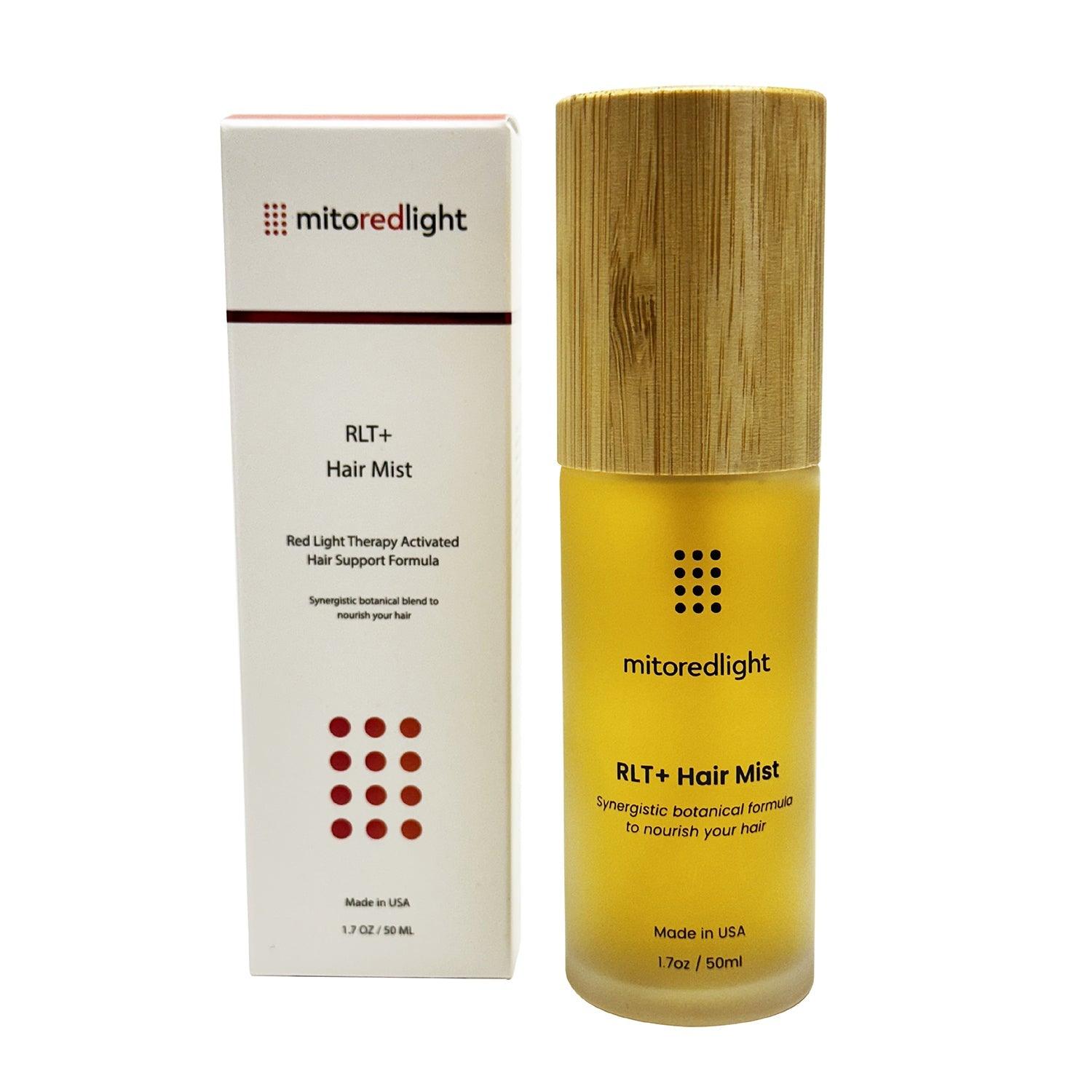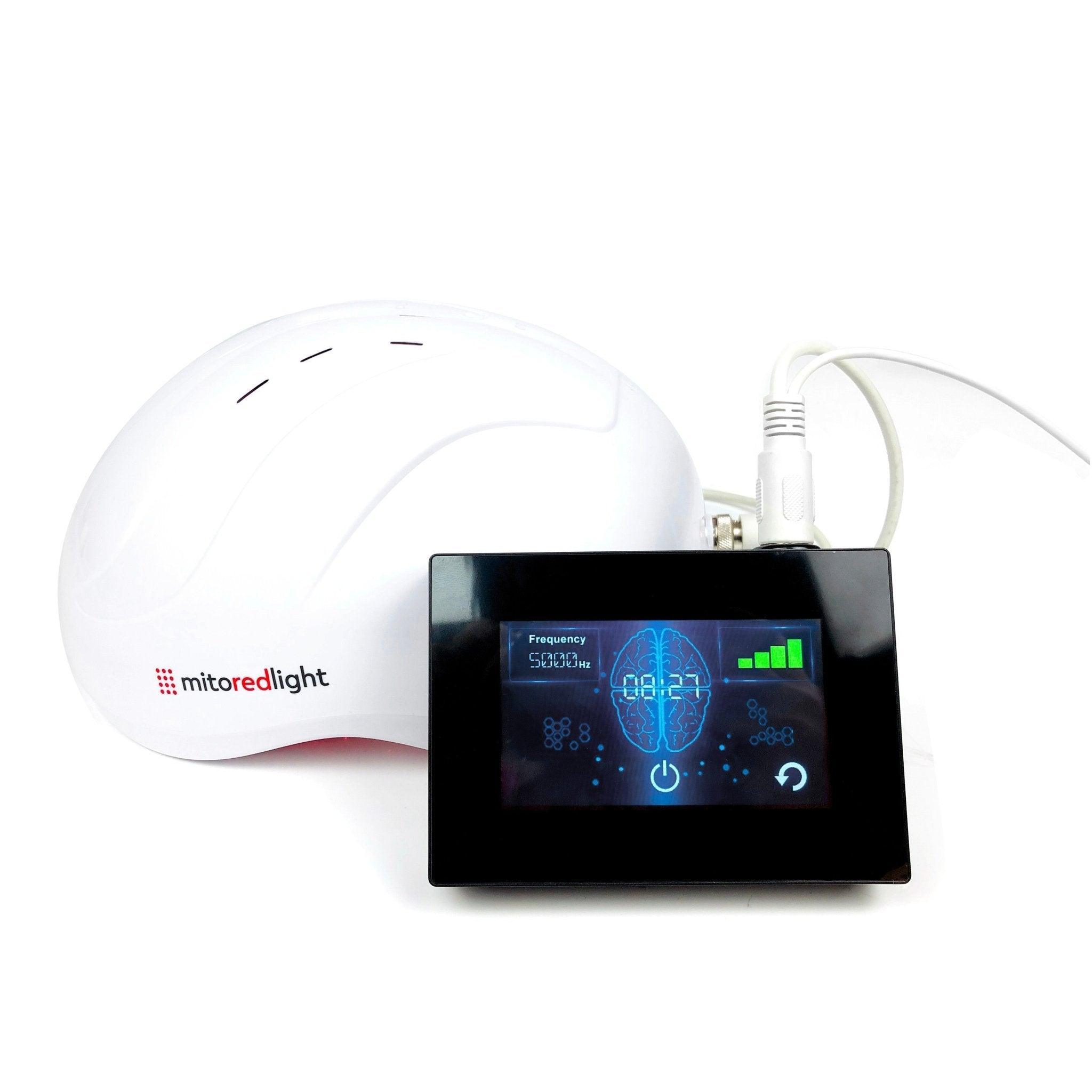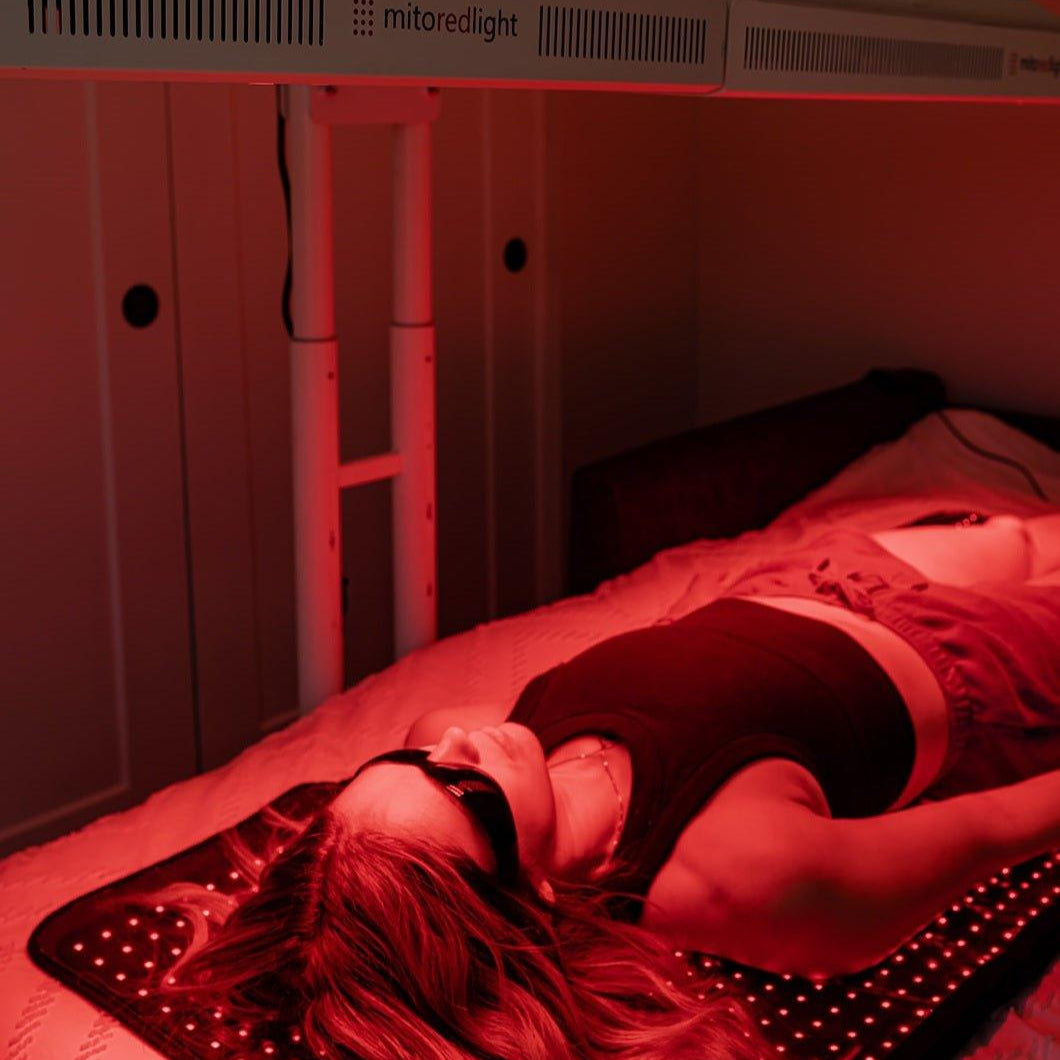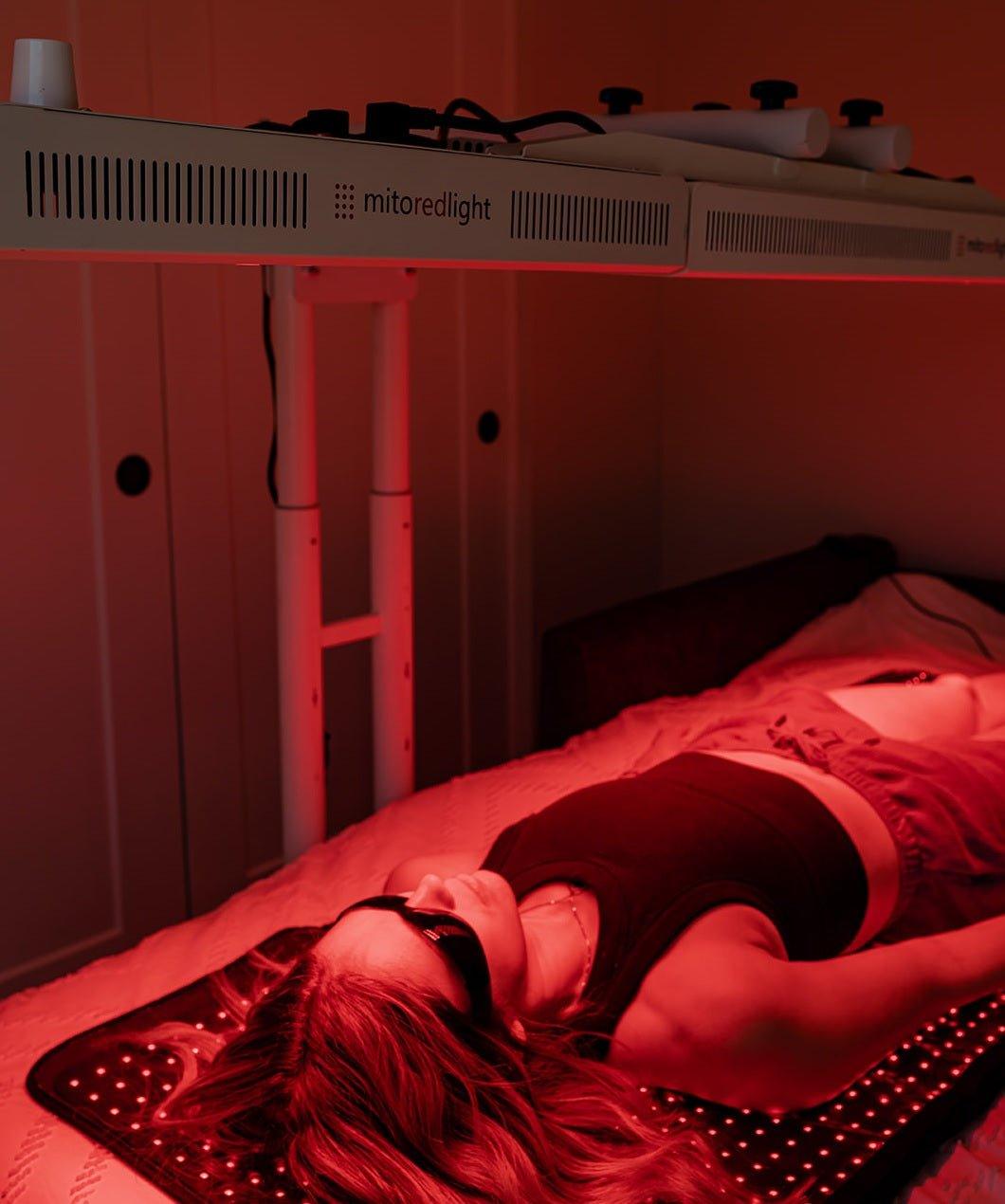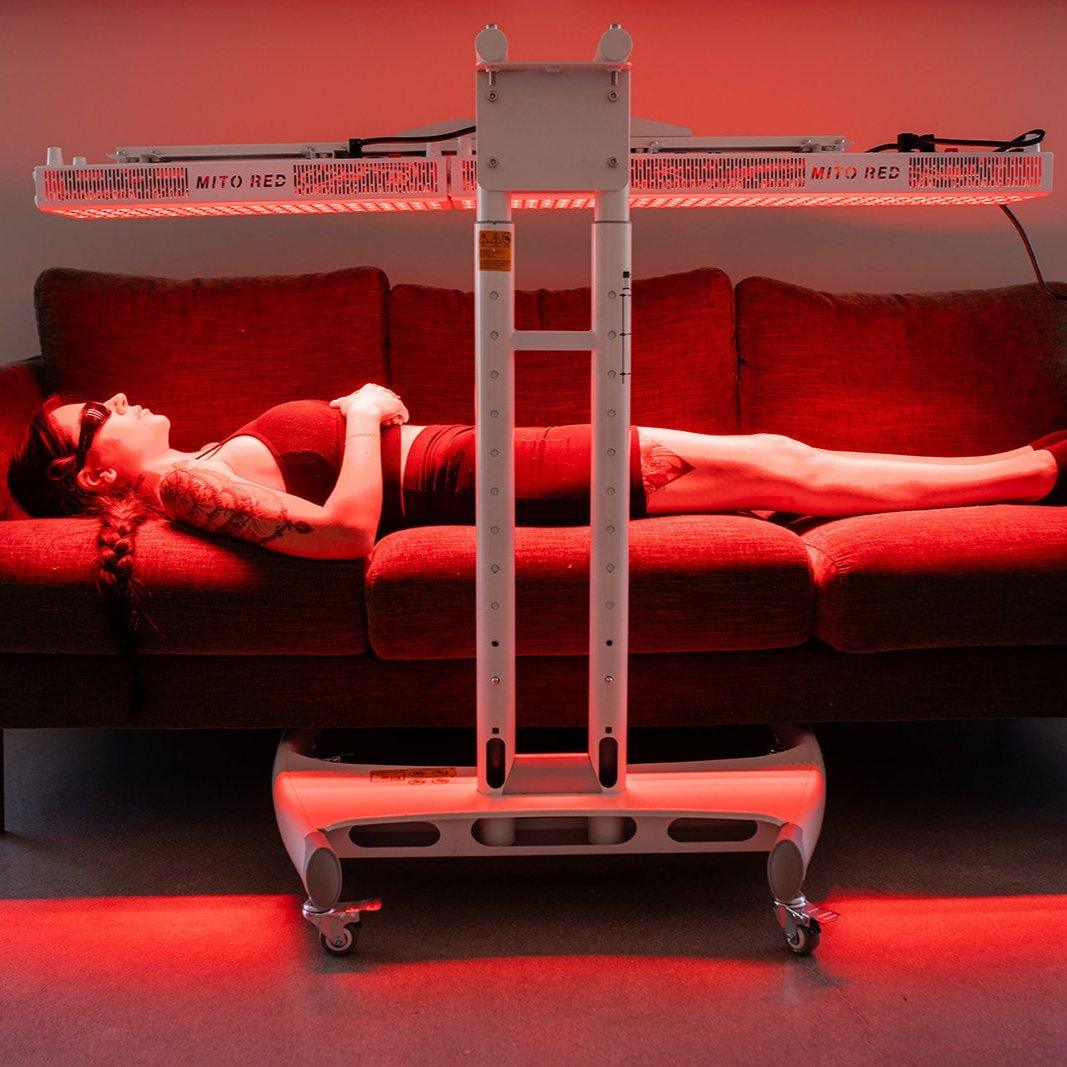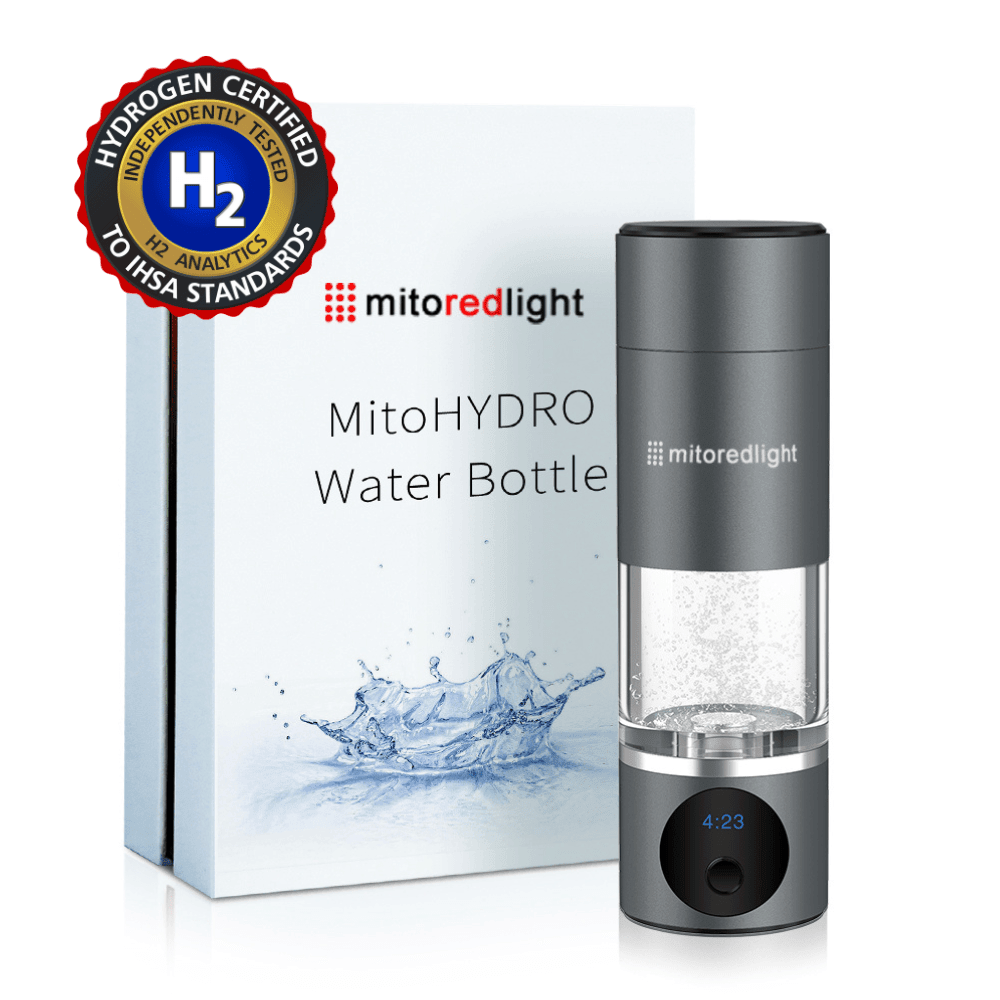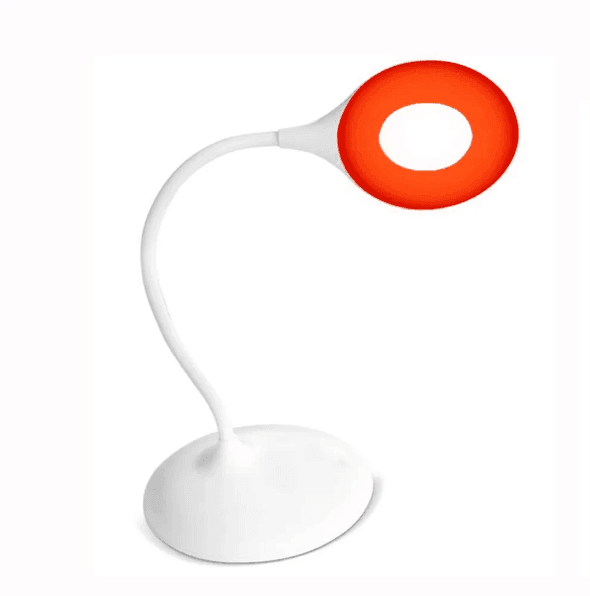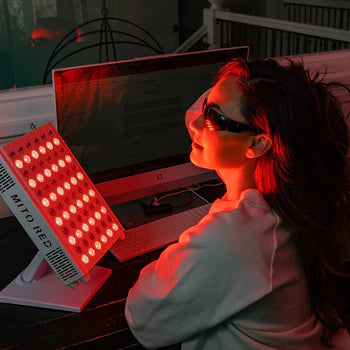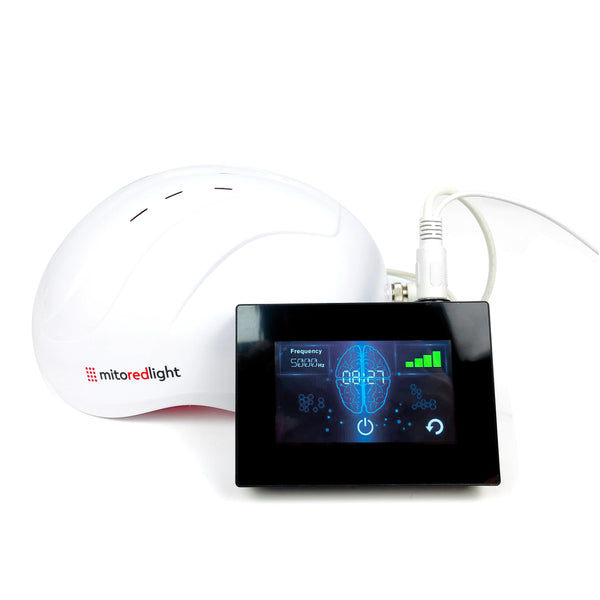DISCLAIMER: Mito Red Light devices are Class II wellness devices aimed at affecting the body through topical heating and supporting cellular function. The information provided in this article and on this site is for educational purposes only and is not intended to imply effectiveness of Mito Red Light devices for any specific application. The information provided in this article and on this site is not intended to diagnose, treat, cure, or prevent any disease, is not a substitute for consultation with a licensed medical provider and should not be construed as medical advice. Click here to read our article on potential contraindications of red light therapy..
Executive Summary
Mito Red Light investigates red light therapy's capacity to impact brain waves and bolster cognitive function through enhanced cellular energy and blood flow. Initial research indicates potential benefits for focus, stress management, sleep enhancement, and memory improvement by modulating brain wave activity. Individuals such as athletes, professionals, and the aging may find it particularly advantageous. Effective utilization necessitates selecting the appropriate device, like the MitoMIND™ Helmet for targeted brain wave influence, and adhering to a consistent therapy schedule. Mito Red Light emphasizes the promising role of red light therapy as a non-invasive method for promoting mental wellness and cognitive health.
Key Takeaways:
- Red light therapy shows potential in modulating brain activity.
- It may offer benefits for focus, stress, sleep, and memory.
- Certain groups could find it particularly beneficial for cognitive support.
- Selecting the right device and consistency are crucial for effectiveness.
- Mito Red Light highlights its potential as a non-invasive mental wellness tool.
Medically Reviewed by | Heidi Wright, BSN, RN, PCCN
Red light therapy is gaining traction for its ability to rejuvenate skin and relieve pain, but recent inquiries probe deeper, exploring its influence on cognitive functions and brain health.
At Mito Red Light, we're diving into the science behind these questions. Can exposure to specific wavelengths of light actually recalibrate our brain waves, enhance mental clarity, and improve overall cognitive function?
This article ventures into the realm of neuroscience to explore how red light therapy might just be the next big thing in mental wellness.
What Is Red Light Therapy?
Red light therapy harnesses low-wavelength red and near-infrared light to initiate biological improvements at a cellular level. This therapy exposes the body to light wavelengths ranging from 630 to 680 nanometers for red light and around 800 to 1000 nanometers for near-infrared light.
These wavelengths are optimal for penetrating skin and soft tissue, offering a non-invasive solution to potentially support overall healing and health.
How Does Red Light Therapy Work?
The core mechanism behind red light therapy lies in its interaction with mitochondria within our cells.
When cells absorb red and near-infrared light, a series of photochemical reactions kickstart within the mitochondria, leading to the production of ATP (adenosine triphosphate), which is the primary energy carrier in all living organisms. This increase in ATP production enhances cellular metabolism, thereby accelerating repair and rejuvenation.
Moreover, red light therapy is believed to release nitric oxide — a critical cellular signaling molecule that helps expand blood vessels and support blood circulation. This process, known as vasodilation, increases the oxygen and nutrient delivery to the cells, further enhancing cellular function and health.
The overall effect is an environment conducive to healing and system-wide health improvement, setting the stage for red light's potential effects on more complex systems such as the brain.
How Does Light Generally Affect the Brain?
You now understand how red light therapy enhances cellular function and health, but how does this interaction extend to the brain?
“Supporting healthy mitochondrial function is crucial for brain cells, as they have high energy demands for tasks like memory, focus, and information processing. Additionally, RLT might influence the flow of blood and oxygen to the brain, further supporting cellular health and function,” notes Heidi Wright, Registered Nurse.
“Some theories suggest light therapy might even promote neuroplasticity, the brain's ability to form new connections and adapt. This potential for enhanced brain cell function and communication holds promise for improving cognitive performance and potentially even aiding in conditions that affect brain function. However, it's important to note that research in this area is still ongoing. While the cellular effects are promising, the long-term impacts of RLT on brain function require more in-depth studies before definitive conclusions can be drawn,” says Wright.
Additionally, light has a direct influence on the brain’s biochemical processes. Exposure to specific wavelengths can trigger the release of certain neurotransmitters, hormones that manage mood and stress, such as serotonin and dopamine, and enhance the production of brain-derived neurotrophic factor (BDNF), which is vital for brain health.
What Is the Relationship Between Red Light and Brain Waves?
We're turning our lens towards the wave patterns that ripple through our minds — brain waves — and how red light therapy influences this fascinating rhythm.
Brain waves are essentially electrical currents that surf the neural pathways, determining our focus, mood, and sleep patterns.
They are usually categorized into five main types, depending on their frequencies from slowest to fastest:
- Delta Waves: Visible during deep sleep.
- Theta Waves: Predominant during daydreaming, light sleep, or meditative states.
- Alpha Waves: Present during relaxed wakefulness.
- Beta Waves: Engaged during active thinking or problem-solving.
- Gamma Waves: Show up during complex cognitive tasks.
This interplay of brain waves orchestrates our thought processes, emotional balance, and overall cognitive function
Preliminary research indicates that red and near-infrared light could influence the frequency and power of these brain waves, possibly subtly tuning the quality of our thoughts, emotions, and cognitive performance. Their profound capacity to affect neuronal energy production and blood flow might also flow over into modulating these brain wave patterns.
While the relationship between red light therapy and brain waves remains an exciting field of continued study, the potential is there for further research. By enhancing our understanding of this connection, we are a step closer to unlocking strategies for heightened mental clarity and cognitive health.
How Might Red Light Therapy Support Cognitive Functions?
You're probably wondering what tangible benefits red light therapy might have on your brain's performance. Research indicates that manipulating light exposure could recalibrate our brain waves, but what does this mean for our mental and emotional well-being?
These days, most of us spend a whole lot of time inside, causing us to largely miss out on exposure to certain wavelengths of light that are key for our overall health and wellness.
Red light therapy can help make up for that — which is the main driving force behind many of its potential benefits.
Potential Support for Focus and Concentration
Red light therapy's potential to modulate beta waves, associated with active thinking and problem-solving, suggests it may be able to help support the body’s system that runs our overall focus and concentration.
By supporting brain cell energy production, individuals might experience additional support for thinking and prolonged attention spans during tasks that require mental acuity, but this is still being researched.
May Support Stress Relief
The influence of red light on alpha and theta waves, which are active during relaxed and meditative states, can play a significant role in stress reduction. These waves help promote feelings of calmness and are often sought after in meditation practices.
Regular sessions of red light therapy may assist in fostering a more relaxed mental state.
May Provide Support for Sleep Quality
Delta waves, which dominate during deep sleep, are crucial for the body's healing processes and for resetting the brain for the next day.
Enhancing delta wave activity through red light therapy might contribute to deeper, more restorative sleep. This improvement in sleep quality could support better cognitive function and overall health.
May Provide Support for Memory Retention
Gamma waves are linked to information processing and memory formation. Red light therapy's potential stimulation of these high-frequency waves could potentially support overall memory retention and cognitive sharpness.
Who Should Consider Red Light Therapy?
If you're intrigued by the possibility of enhancing your body's natural processes through non-invasive means, red light therapy might just be the innovative approach you've been searching for. This therapy could be particularly beneficial for various groups of individuals seeking to optimize their health and performance.
Athletes and Active Individuals
Those engaged in regular physical activity may find red light therapy particularly advantageous for recovery purposes.
By enhancing circulation and supporting cellular health, RLT may help soothe muscle soreness and support healthy recovery times, enabling efficient training sessions and improved performance.
Professionals and Students
For those who need to maintain high levels of focus and cognitive sharpness, red light therapy offers potential benefits. By potentially enhancing brain function and energy levels, it may aid in improving concentration and mental clarity, making it a valuable tool for anyone whose day-to-day activities demand rigorous mental effort.
Aging Populations
As we age, natural processes like cellular regeneration and recovery slow down. Red light therapy may help support these processes, offering a non-invasive way to enhance general wellness, help maintain mobility, and support quality of life by helping to manage signs of aging.
Wellness Enthusiasts
If you are keen on maintaining high levels of health and proactive about wellness strategies, red light therapy offers a cutting-edge addition to your routine. It's a tool that aligns with a holistic approach to health, potentially aiding in everything from enhancing skin appearance to supporting efficient body functioning.
Individuals Seeking Better Sleep
Those struggling with sleep issues might benefit from red light sessions before bedtime. By potentially calming brain activity and enhancing relaxation, it may contribute to a quicker onset of sleep and more restful nights, crucial for overall health and well-being.
Anyone Interested in Preventive Health Measures
For those who prioritize preventive health care, red light therapy provides a method to support various bodily functions at a cellular level. Regular sessions may help in maintaining an optimized state of health, potentially staving off issues before they become problematic.
How To Utilize Red Light Therapy Effectively
Integrating red light therapy into your wellness routine can be both simple and enjoyable. Here’s how you can get started effectively:
Step 1: Select Your Device
First things first, pick a device that fits your needs. Whether you’re after targeted treatment or full-body exposure, choosing the right tool is crucial. For those new to red light therapy, our Mito Mobile offers a great starting point due to its portability and ease of use.
For more targeted benefits pertaining to brain waves, choose our MitoMIND™ Helmet. This device allows users to select the HZ that corresponds to specific brain waves, potentially supporting cognitive function, mental clarity, and focus.
Step 2: Prepare Your Space
Find a quiet, comfortable spot in your home where you can relax without interruptions. Make sure the area is clean, and that you have enough space to position your device correctly.
Step 3: Get Ready for Your Session
Before you begin, clean the area of your body you wish to expose to the light. Remove any clothing from the targeted area to ensure the light can penetrate the skin effectively. If you’re using our MitoPRO Series, position yourself a proper distance from the panel — usually a few inches away — to maximize coverage.
Step 4: Time Your Therapy
A typical session should last 10 to 20 minutes. It’s important to adhere to the recommended timings to avoid overexposure. Start with shorter sessions and gradually increase as your body adapts to the therapy.
Step 5: Maintain a Routine
Consistency is key for achieving significant results. We recommend regular sessions to truly reap the benefits of red light therapy. With devices designed for ease of use and efficiency, you can easily incorporate therapy into your daily schedule.
Step 6: Monitor and Adjust
Keep track of your therapy sessions and note any changes you experience. If you’re using one of our customizable devices, take advantage of the settings to tailor the wavelength and intensity as your needs evolve.
The Bottom Line
So, can red light therapy truly recalibrate our brain waves? The evidence suggests a resounding potential. “Scientists agree it is worth further exploration for both medical applications and academic and attention span support,” notes Wright.
At Mito Red Light, we've embraced the scientific foundations that support red light therapy as a non-invasive way to enhance mental clarity and cognitive function. By stimulating cellular energy and improving blood flow, red light therapy appears well-positioned to influence brain activity beneficially, potentially offering a new dimension to mental wellness strategies.
As we continue to explore and understand the profound impact of red light on brain health, we invite you to experience the benefits firsthand.
Whether you’re looking to sharpen your focus, improve your mood, or simply maintain cognitive health as you age, our range of red light therapy products are designed to support your journey. Discover the power of light with Mito Red Light and transform the way you think about brain health.
Dive deeper into the science and reap the benefits — explore our products today and take the first step towards a brighter, healthier future. Discover more and start your journey with red light therapy.
Click to learn more about potential red light therapy benefits.
Related Articles:
How To Prep Your Skin Before Red Light Therapy
Everything You Need to Know About Red Light Therapy and Brain Health
Red Light Therapy Masks vs. Panels
Retinol and Red Light Therapy: Are They Safe Together?
Sources:
Red Light Therapy: Benefits, Side Effects & Uses | Cleveland Clinic
LED Light Therapy: How It Works, Colors, Benefits & Risks | Cleveland Clinic
Brain Waves - an overview | ScienceDirect Topics
Effect of Near-Infrared Pulsed Light on the Human Brain Using Electroencephalography | PMC
Regional Delta Waves In Human Rapid Eye Movement Sleep | PMC
Gamma Wave - an overview | ScienceDirect Topics
